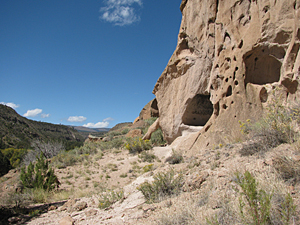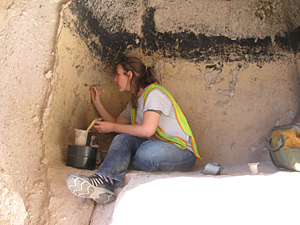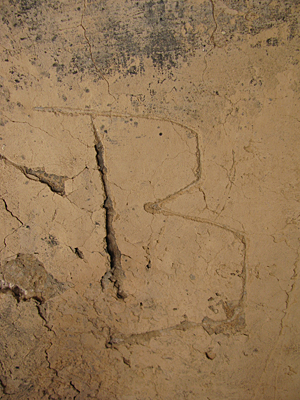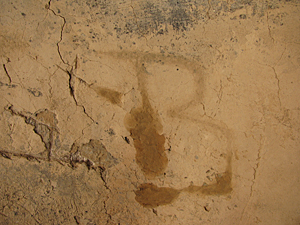ADVERTISEMENT
- Rozovsky wins prestigious NSF Early Career Award
- UD students meet alumni, experience 'closing bell' at NYSE
- Newark Police seek assistance in identifying suspects in robbery
- Rivlin says bipartisan budget action, stronger budget rules key to reversing debt
- Stink bugs shouldn't pose problem until late summer
- Gao to honor Placido Domingo in Washington performance
- Adopt-A-Highway project keeps Lewes road clean
- WVUD's Radiothon fundraiser runs April 1-10
- W.D. Snodgrass Symposium to honor Pulitzer winner
- New guide helps cancer patients manage symptoms
- UD in the News, March 25, 2011
- For the Record, March 25, 2011
- Public opinion expert discusses world views of U.S. in Global Agenda series
- Congressional delegation, dean laud Center for Community Research and Service program
- Center for Political Communication sets symposium on politics, entertainment
- Students work to raise funds, awareness of domestic violence
- Equestrian team wins regional championship in Western riding
- Markell, Harker stress importance of agriculture to Delaware's economy
- Carol A. Ammon MBA Case Competition winners announced
- Prof presents blood-clotting studies at Gordon Research Conference
- Sexual Assault Awareness Month events, programs announced
- Stay connected with Sea Grant, CEOE e-newsletter
- A message to UD regarding the tragedy in Japan
- More News >>
- March 31-May 14: REP stages Neil Simon's 'The Good Doctor'
- April 2: Newark plans annual 'wine and dine'
- April 5: Expert perspective on U.S. health care
- April 5: Comedian Ace Guillen to visit Scrounge
- April 6, May 4: School of Nursing sponsors research lecture series
- April 6-May 4: Confucius Institute presents Chinese Film Series on Wednesdays
- April 6: IPCC's Pachauri to discuss sustainable development in DENIN Dialogue Series
- April 7: 'WVUDstock' radiothon concert announced
- April 8: English Language Institute presents 'Arts in Translation'
- April 9: Green and Healthy Living Expo planned at The Bob
- April 9: Center for Political Communication to host Onion editor
- April 10: Alumni Easter Egg-stravaganza planned
- April 11: CDS session to focus on visual assistive technologies
- April 12: T.J. Stiles to speak at UDLA annual dinner
- April 15, 16: Annual UD push lawnmower tune-up scheduled
- April 15, 16: Master Players series presents iMusic 4, China Magpie
- April 15, 16: Delaware Symphony, UD chorus to perform Mahler work
- April 18: Former NFL Coach Bill Cowher featured in UD Speaks
- April 21-24: Sesame Street Live brings Elmo and friends to The Bob
- April 30: Save the date for Ag Day 2011 at UD
- April 30: Symposium to consider 'Frontiers at the Chemistry-Biology Interface'
- April 30-May 1: Relay for Life set at Delaware Field House
- May 4: Delaware Membrane Protein Symposium announced
- May 5: Northwestern University's Leon Keer to deliver Kerr lecture
- May 7: Women's volleyball team to host second annual Spring Fling
- Through May 3: SPPA announces speakers for 10th annual lecture series
- Through May 4: Global Agenda sees U.S. through others' eyes; World Bank president to speak
- Through May 4: 'Research on Race, Ethnicity, Culture' topic of series
- Through May 9: Black American Studies announces lecture series
- Through May 11: 'Challenges in Jewish Culture' lecture series announced
- Through May 11: Area Studies research featured in speaker series
- Through June 5: 'Andy Warhol: Behind the Camera' on view in Old College Gallery
- Through July 15: 'Bodyscapes' on view at Mechanical Hall Gallery
- More What's Happening >>
- UD calendar >>
- Middle States evaluation team on campus April 5
- Phipps named HR Liaison of the Quarter
- Senior wins iPad for participating in assessment study
- April 19: Procurement Services schedules information sessions
- UD Bookstore announces spring break hours
- HealthyU Wellness Program encourages employees to 'Step into Spring'
- April 8-29: Faculty roundtable series considers student engagement
- GRE is changing; learn more at April 15 info session
- April 30: UD Evening with Blue Rocks set for employees
- Morris Library to be open 24/7 during final exams
- More Campus FYI >>
8:05 a.m., Dec. 17, 2009----Tourists visiting the ancient cliff dwellings at Bandelier National Monument in New Mexico are expected to take away lasting memories of the dramatic scenery and of the Pueblo culture, with its 800-year-old homes and sacred places carved from the rocks.
Unfortunately, says art conservation graduate student Beth Rydzewski, some visitors also leave something behind at Bandelier -- graffiti they've scrawled or scratched onto the walls of the cliffs and inside the hollowed-out ancestral Pueblo dwellings called cavates.
Rydzewski, who is working in Santa Fe during her third and final year as a student in the Winterthur/University of Delaware Program in Art Conservation (WUDPAC), spent part of the summer helping to address the problems of graffiti and other vandalism at Bandelier. She joined other conservators in a project funded by the “Vanishing Treasures” program of the National Park Service that seeks to preserve some of the United States' most valuable landmarks and places that are in danger from natural and manmade damage.
“At Bandelier, this program targets the most visible places, where tourists are most likely to go,” Rydzewski said. “It's taken years and years of hard work already to reduce the graffiti, and it will take many more years to remove it all. Some cavates have more graffiti than others, but the number of cavates that require attention is astounding.”
The conservators use different types of fill material in different locations, each selected and blended to most closely match the color and texture of a particular cavate's walls. They use the filler -- which might be a type of compressed volcanic ash known as tuff or a form of earthen plaster -- to painstakingly fill in graffiti that has been scratched or carved into the rock.
One cavate on Bandelier's main tourist path has been reconstructed to provide visitors with an idea of how the space would have looked when it was in daily use, including ceilings and upper walls covered with soot from the dwelling's fires. Twice a year, conservators light a pine torch to deposit a new layer of soot on the walls and ceiling, covering any graffiti that has been added to the old surface.
“This is very satisfying when complete,” said Rydzewski, who tried her hand at “re-sooting” during the summer. “Curious visitors are as much grateful for the treatment as they are horrified at the act of graffiti.”
Rydzewski is spending the academic year working for the New Mexico Museum Resources Division, an agency that operates a conservation lab to work on damaged or deteriorating objects from various museums around the state. While she was working there during the summer, conservators from the graffiti-mitigation team invited her to accompany them. Cold weather in Bandelier's high desert has ended the cavate work for now, but Rydzewski said she plans to continue assisting when it resumes in the spring.
“It's really wonderful experience, and I feel so lucky that everyone was so accommodating to an intern and that they included me,” she said. “It was almost like a dream come true to be working outdoors in such a stunning place and to be taking part in something that's so important.”
WUDPAC is a three-year program in which students earn a master's degree in art conservation and a certificate in conservation. The third year consists of an internship, working with conservation professionals at host institutions or independent laboratories, and it concludes with the students giving presentations about their projects at Winterthur Museum and Country Estate in August.
Article by Ann Manser






